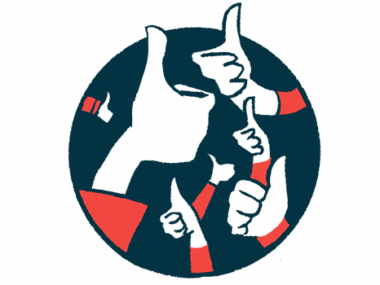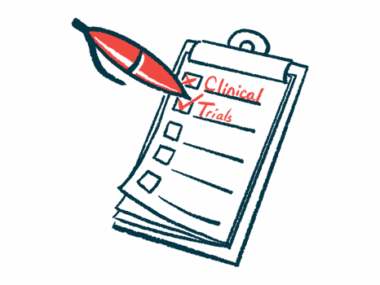At-home Nitrous Oxide May Ease Pain in Severe DEB: Case Report
Written by |

At-home inhalation of nitrous oxide, a colorless gas commonly used for sedation, may help reduce pain during wound dressings in patients with severe recessive dystrophic epidermolysis bullosa (DEB), a case report shows.
For a 28-year-old man in Italy with spontaneous and frequent blisters due to severe DEB, “the beneficial effects of conscious sedation are evident,” according to the researchers, who described treating the patient with nitrous oxide given through a nasal mask.
The patient “reports a significant acute-pain reduction, reduction in anticipatory pain and anxiety before the procedure, … and less fatigue after the dressing session, which allows him to enjoy and perform multiple activities during the day,” the researchers wrote.
Additionally, for the man’s caregivers, “their burden has been significantly reduced in parallel with the reduction in patient suffering,” the team reported.
The report, titled “Procedural analgesia with nitrous oxide at home for epidermolysis bullosa: A case report,” was published in the journal Medicine.
DEB, one of the major types of epidermolysis bullosa, is characterized by very fragile skin, prone to blisters and tearing, and often associated with pain. Current pain management strategies include psychological support, along with medication and local wound care.
However, improvements in pain management are limited due to a lack of studies on the subject for EB.
In this case report, the team of researchers described the case of a DEB patient requiring daily blister treatment who used inhaled nitrous oxide, sometimes called laughing gas, at home as a pain management strategy.
He constantly developed spontaneous blisters, following skin rash and itching. His medical history showed tiny bone fractures as a result of severe osteoporosis, celiac disease — an immune reaction to eating gluten, damaging the small intestine — and a severe episode of bleeding inflammation of the blood vessels following an infection.
He underwent several surgeries to correct his hand deformities and improve hand dexterity.
Standard therapies for pain control, administered after other alternatives, had proven inadequate. Denosumab, a therapy for osteoporosis (sold as Prolia) was administered monthly.
The man also required daily treatment consisting of lancing blisters with a needle and emptying them by compression, and had an average of three full-body dressings per week. His wound care was deemed very painful, particularly in the feet and armpits.
He complained of intense burning pain during wound cleansing of such intensity that it impaired cleansing by his caregivers. As a result, the patient had anxiety before the procedure. Topical options were ineffective for pain relief.
Immediate-release oral morphine, which is the only form of morphine allowed in Italy to manage pain in non-cancer patients, made him feel sleepy, drowsy, or lightheaded.
As a result, the patient requested a short-acting, effective pain relief strategy that would have no side effects and minimal long-term consequences.
He started inhalation of nitrous oxide as a pain management strategy, advised by pain therapy experts. The gas was delivered using the IntelliFlux equipped with a gas mixer.
Nitrous oxide has been reported to act as a partial activator of opioid receptors, prompting pain relief.
An experienced anesthesiologist was present to supervise the first administration of the gas. The second administration was attended by a physician with airway management skills and basic life-support certification. The procedure was conducted in a room in the patient’s home, prepared in advance, that was cleaned, ventilated, and equipped with emergency devices.
The first dressing under nitrous oxide was completed in about one hour from a prior duration of 3.5–4 hours — a marked decrease of 25–40%.
Additional benefits included a significant easing of acute pain, as well as pain and anxiety reduction prior to the dressings. He also required fewer medications and was less tired.
“The domestic device allows greater flexibility of schedules, allowing less effort for caregivers,” the scientists wrote.
Medium-term benefits included a marked easing in the bad smell of wounds up to its disappearance.
The patient’s vital signs remained stable, with no episodes of low oxygen, rapid heartbeat, or low blood pressure. Pain score using the Numeric Pain Rating Scale — higher scores mean more severe pain — showed a score reduction from 10 to 1 after nitrous oxide was given.
Since nitrous oxide may deplete vitamin B12, regular follow-up was conducted to assess this vitamin’s levels as well as neurological complications. The patient received a standard multivitamin supplement daily. At the time of the study’s completion, he was performing regular daily social activities.
Overall, this case report suggests that nitrous oxide-mediated pain relief “is safe and effective, resulting in a significant reduction in procedural pain and an improvement in the quality of life of patients and their caregivers,” the investigators concluded.






